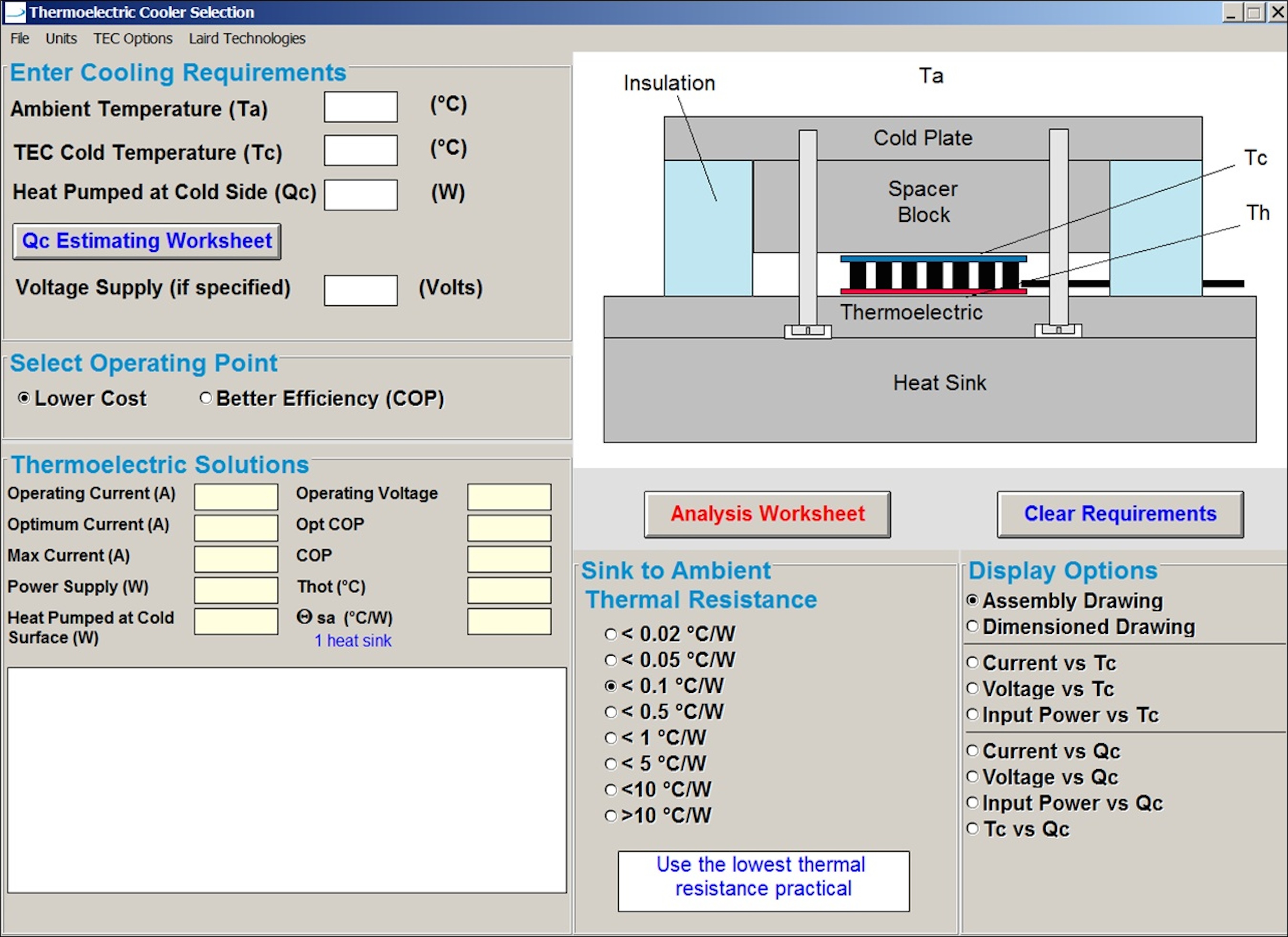TEM simulation software shortens design cycles
Laird has updated and enhanced the AZTEC TEM (ThermoElectric Module) simulation programme algorithms to further reduce thermal design time. The AZTEC product selection tool allows design engineers to specify a given set of input variables based on application attributes and the software analysis outputs optimal TEMs for examination.
The advanced programme enables design engineers to quickly choose the ideal TEM based on a cross comparison of TEM datasheets. Further reducing a customer's time-to-market, the AZTEC software contains an analysis worksheet that simulates how TEM devices will function under a specific set of operating conditions.
Anders Kottenauer, Senior Vice President, Engineered Thermal Systems, Laird, commented: "Selecting the right thermoelectric module for a particular application can be a long and difficult process for a thermal engineer, one that requires many stages of trial-and-error. In order to speed-up this process, Laird has enhanced its user-friendly AZTEC TEM selection tool so that the TEM simulations are even faster and more accurate. The module analyses the Laird's TEM product line, detailing each TEM, and shows a comparison in regard to temperature differential and heat pumping capacity."

The product selection tool uses input variables including heat load, ambient and control temperatures, input voltage requirement and thermal resistance of hot side heat exchangers to recommend TEMs needed to reach an application's operating condition. The software has been updated with the latest TEM product offerings from Laird.
AZTEC also features an Analysis Worksheet Tool, which simulates the expected thermoelectric output parameters based on a given set of thermal and electrical operating points. Output parameters calculated include: the hot and cold side temperatures of the TEM, heat pumped at the cold surface of the TEM, coefficient of performance and input power requirements. The total hot side heat dissipation is also calculated, as it is beneficial in sizing a proper heat exchanger, which commonly mounts directly onto a TEM.
The Qc Estimating Worksheet within the programme calculates an estimate on the heat load for device (spot) or chamber (volume) cooling applications. Computations are made based on input provided by the user such as temperature requirements, volumetric dimensions, insulation thickness, material properties and active heat load.
The AZTEC TEM product selection tool can be downloaded here.






